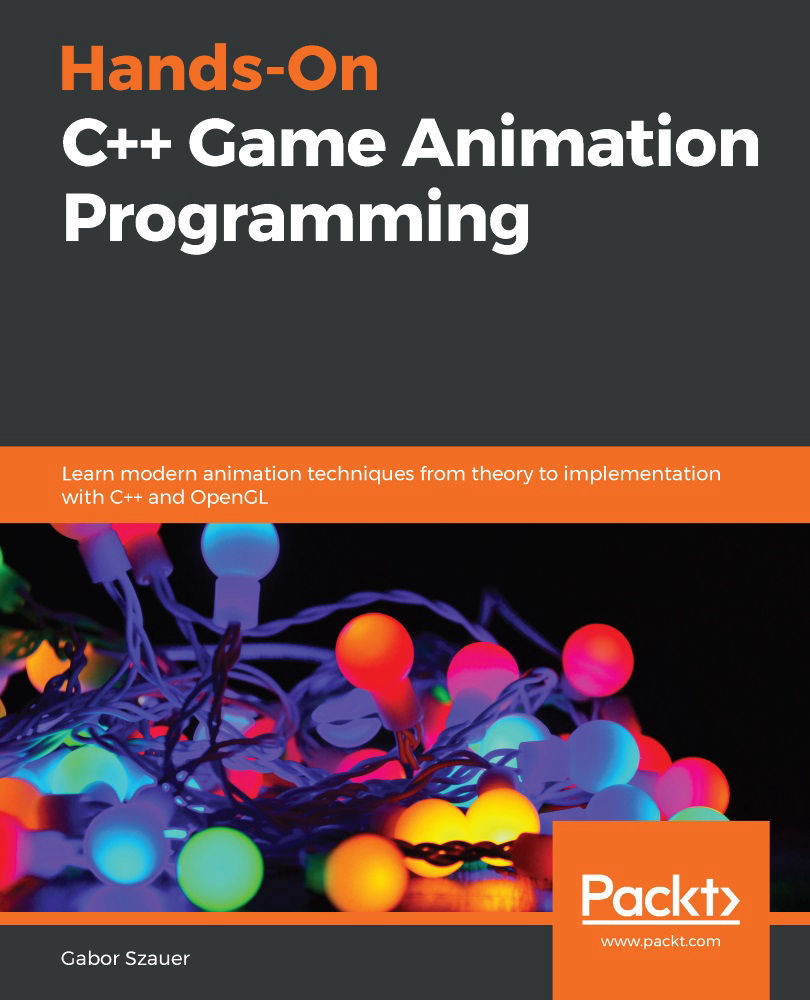Combining transforms
Consider a skeleton, as an example. At each joint, you could place a transform to describe the motion of the joint. When you rotate your shoulder, the elbow attached to that shoulder also moves. To apply the shoulder transformation to all connected joints, the transform on each joint must be combined with its parent joint's transform.
Transforms can be combined in the same way as matrices and quaternions and the effects of two transforms can be combined into one transform. To keep things consistent, combining transforms should maintain a right-to-left combination order. Unlike matrices and quaternions, this combine function will not be implemented as a multiplication function.
Combining the scale and rotation of two transforms is simple—multiply them together. Combining the position is a bit harder. The combined position needs to be affected by the rotation and scale components as well. When finding the combined position, remember the order of...







































































